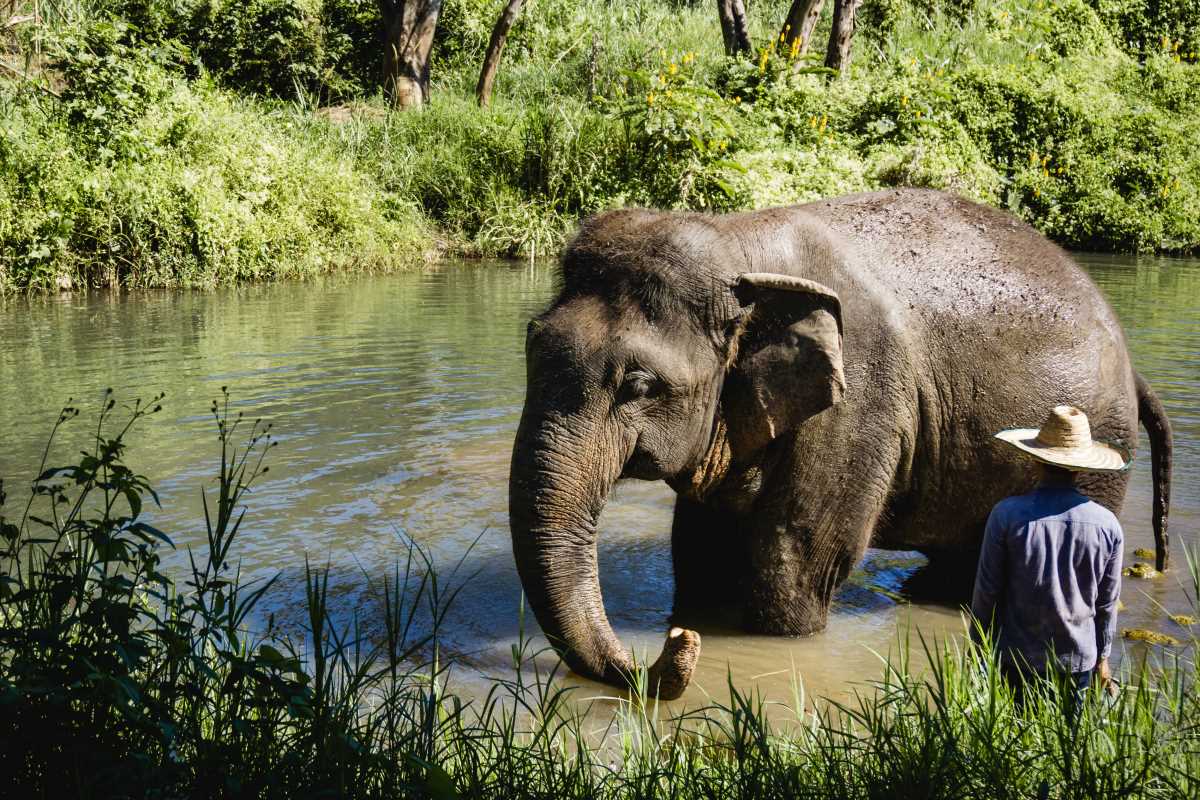Have you ever dreamed of getting up close to exotic animals in their natural habitats? Wildlife sanctuaries around the world make that dream possible, but some do it in truly unusual and unforgettable ways. From walking alongside rescued elephants to snorkeling with manatees, there’s a sanctuary out there for every kind of nature lover. These unique destinations don’t just offer incredible opportunities for adventure but also play a significant role in conservation. By visiting, you’re not only crossing a once-in-a-lifetime experience off your bucket list but also helping to protect the planet’s most remarkable creatures. Here are some one-of-a-kind wildlife sanctuaries that will ignite your sense of wonder and deepen your connection to nature.
1. Elephant Nature Park, Thailand
If elephants are your spirit animal, this sanctuary in Chiang Mai is a must-visit. The Elephant Nature Park is a haven for rescued elephants, many of whom were abused in logging or tourism industries. What makes this place unique is its hands-off approach. Instead of riding elephants, visitors are encouraged to observe and interact with them respectfully.
Here, you can feed the elephants fruit, walk with them through lush fields, or watch them play in the river during their bath time. The park emphasizes education, teaching visitors about the elephants’ stories and the importance of ethical tourism. It’s a moving experience that leaves a lasting impression.
2. Pingtung Rescue Center for Endangered Wild Animals, Taiwan
Tucked away in Taiwan, this sanctuary is dedicated to saving animals from illegal wildlife trafficking. The center cares for rare species you won’t find anywhere else, like clouded leopards and pangolins. What sets Pingtung apart is its dedication to rehabilitating animals with the goal of releasing them back into the wild.
Visitors aren’t allowed direct contact with the animals to ensure their adjustment to the wild remains intact. Guided tours give you a glimpse into the challenging, behind-the-scenes work of wildlife conservation. It’s a sobering but inspiring place where you can learn about the effort it takes to protect some of the planet’s most vulnerable species.
3. Big Cat Rescue, USA
Animal lovers in the United States should head straight to Tampa, Florida, to visit Big Cat Rescue. This sanctuary focuses on rescuing big cats like lions, tigers, and leopards from abusive situations. Each animal has plenty of space to explore, and guests can take guided tours to learn about their individual stories.
What makes Big Cat Rescue unique is how much it emphasizes advocacy. You’ll leave with a better understanding of how private ownership and entertainment industries exploit these magnificent creatures. If you’re lucky, you might hear a tiger’s famous “chuff," which is their way of saying hello.
4. WOOP Wildlife Sanctuary, Australia
Australians are no strangers to unique wildlife, and WOOP Wildlife Sanctuary in Queensland takes it up a notch by offering rehabilitation for rare and injured native animals. From kangaroos to koalas, you can see some of the most distinctive creatures in the world.
What makes this sanctuary stand out is its inclusive, hands-on activities for visitors. You can participate in feeding or watch animal health check-ups conducted by veterinarians. The funds from visitor contributions go directly to sustaining efforts to protect Australia’s remarkable biodiversity.
5. Crystal River National Wildlife Refuge, USA
For those who favor watery adventures, visiting this Florida refuge is unlike anything else. Crystal River is one of the only places in the world where you can legally swim with wild manatees. This endangered species, often called “sea cows,” is known for its gentle and curious nature.
Sanctioned tours allow visitors to snorkel alongside these adorable giants in a way that doesn’t disturb their natural routines. Much of the work done at Crystal River centers around education and protecting manatee habitats. Visitors leave with a new appreciation for marine ecosystems and the creatures they shelter.
6. Monkeyland, South Africa
Located in the forests of Plettenberg Bay, Monkeyland is the world’s first free-roaming primate sanctuary. Here, dozens of monkey species live, ranging from gibbons to tiny lemurs. What makes this sanctuary unique is how it allows the monkeys to live in a natural, forested environment free from cages.
Visitors can take guided walks through the forest, where monkeys swing from vines right above your head. While the animals are curious and may come close, staff ensure that human interaction is minimal to keep the monkeys safe and stress-free. This sanctuary is an excellent reminder that animals thrive best in their own environment.
7. Sloth Sanctuary, Costa Rica
Is there a more laid-back animal than the sloth? If you’ve got a soft spot for these slow-moving creatures, the Sloth Sanctuary in Costa Rica offers a magical experience. The sanctuary rescues injured and orphaned sloths, preparing them for reintroduction to the wild whenever possible.
During your visit, you’ll learn about the two main species found in Costa Rica, the three-toed and two-toed sloths. You can meet rescued sloths in person, watch them eat, and maybe even catch a glimpse of a baby sloth in their nursery. The sanctuary is beloved for raising awareness about the threats sloths face from deforestation and traffic accidents.
Why These Places Matter
Wildlife sanctuaries are much more than tourist destinations. They’re safe spaces for rescue, rehabilitation, and conservation. By visiting, you’re supporting important efforts to protect biodiversity. Many of these places rely heavily on donations and tourism, meaning your trip helps fund their work.
But it’s not just about funding. Visiting a sanctuary often opens your eyes to the challenges wildlife face, from habitat loss to pollution. These experiences inspire people to make more thoughtful choices, like minimizing plastic waste or saying no to unethical attractions like elephant rides.
How To Plan Your Visit
If you’re excited to visit a wildlife sanctuary, consider a few things first. Make sure the sanctuary you choose is ethical. Look for places that focus on rehabilitation and avoid any facility that allows direct contact with animals unless it’s for medical care. Do your research to ensure your visit supports genuine conservation efforts.
Finally, remember to respect the animals and their environment. Avoid making loud noises or trying to feed wildlife unless instructed by staff. The best way to love nature is to enjoy it without causing harm.
 (Image via
(Image via




.jpg)
